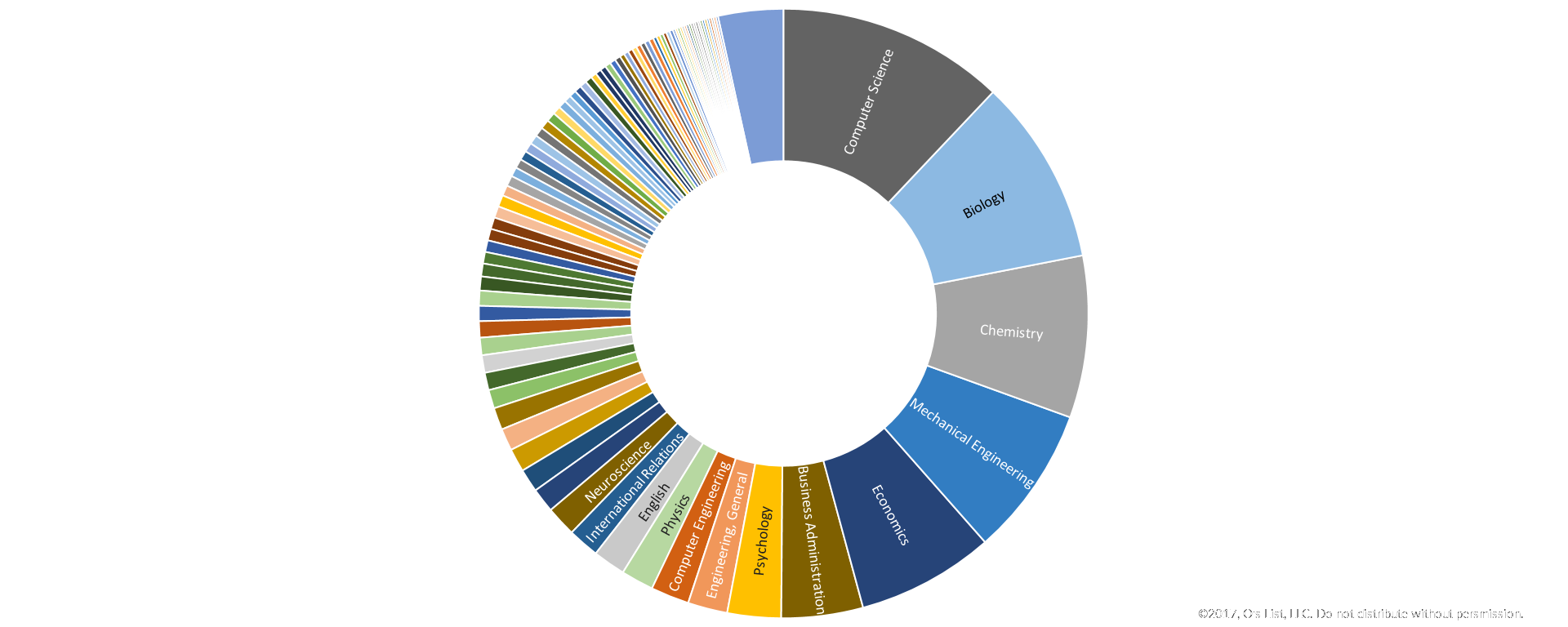Some of the most searched majors on O’s List are:


Some of the most searched majors on O’s List are:

While you are in high school, here are the 6 most important things to think about while figuring out the college fit (we are not talking academic fit of GPA/test scores):

“Finding your College Fit” is a phrase that trips up most students and parents. How is a student (or a parent) supposed to figure out if a college is going to be a good fit for them? It is not possible to travel to all the colleges that they are interested in or have heard about. While families do travel to quite a few colleges to check them out and get a flavor for the various kinds of colleges, it can still be quite baffling to figure out the elusive “fit”.

Enrollment rate is one of the trickier college admission metrics to understand and parse as it is the result of a combination of factors. On the face of it, it is simply the percentage of the admitted (freshman) students who actually enroll for the year. The enrollment rate is also referred to as the yield rate by colleges and enrollment management consultants. Colleges closely monitor their yield rate and try to ensure that it does not drop year on year. This is because the yield rate spotlights the “desirability” of the college.

Just the mention of admission rate or acceptance rate gets most students and parents and educators emotional, stressed and concerned. Let’s take a look into what the admission rate means. Admission rate is the percentage of the applicants who have received an offer of admission from a college. In isolation, the admission rate gives limited information about the college. The admission rate is an important metric, BUT it has to be viewed in conjunction with a few other metrics for it to make sense for students and parents looking at colleges for application.

The graduation rate is one of the most important metrics to look at while evaluating or comparing colleges. The graduation rate gives you an idea of the percentage of the full time freshmen that graduate with an undergraduate degree in a specified number of years. Graduation rate profiles are very different for private and public colleges. Let's take a look at public universities and see what would be a good stress test for them.
Public universities were established to offer education mostly to resident students. The public universities can be either large university systems or a standalone university. The large university systems can either be a distributed campus system or a main flagship and satellite campus system and in a few cases a hybrid system. An example of the distributed campus is the University of California. A flagship and satellite campus system example would be the Pennsylvania State University system. A good example of the hybrid system is the SUNY (State University of New York) system.

The graduation rate is one of the most important metrics to look at while evaluating or comparing colleges. Numerically, the graduation rate gives you an idea of the percentage of the full time freshmen that graduate with an undergraduate degree in a specified number of years. Usually the college graduation rate is reported in terms of 4 years, 6 years and 8 years.
The graduation rate of a college depends on many factors, however it can give you a sense of how long it can take a student to graduate with a degree from a particular college. If you see a college with 4 year graduation rate of 40% and a 6 year graduation rate of 75%, then there is a higher probability of a student spending more than 4 years to graduate with a degree as compared to a college with a 4 year graduation rate of 75% and a 6 year graduation rate of 92%.

Colleges have beautiful websites, glossy handouts that all tell the same story: an enriching student life, cutting edge research, beautiful campus, life beyond academics, all the clubs, sports, activities, music, … the list is endless. It is easy to get caught up in the pictures and the story telling. Even easier to get caught in the “where to apply” cycle.